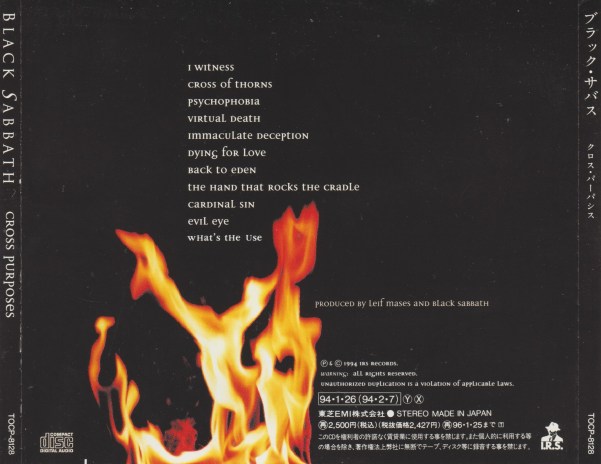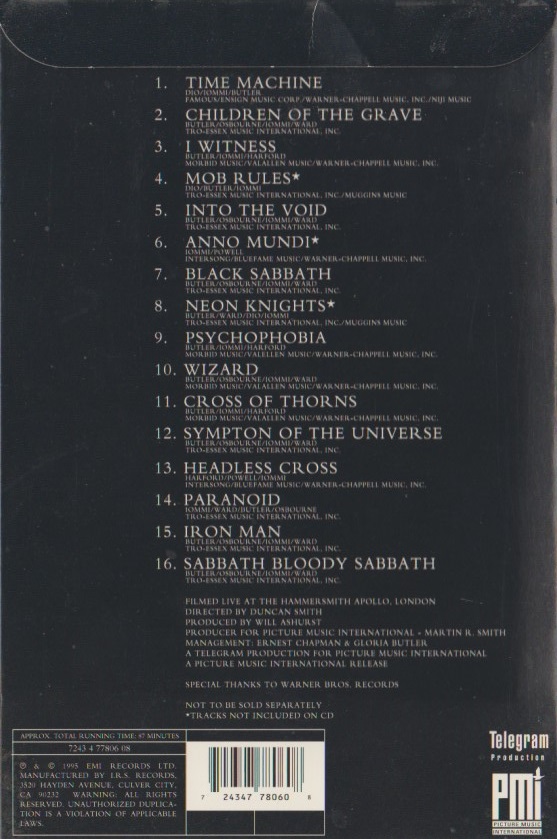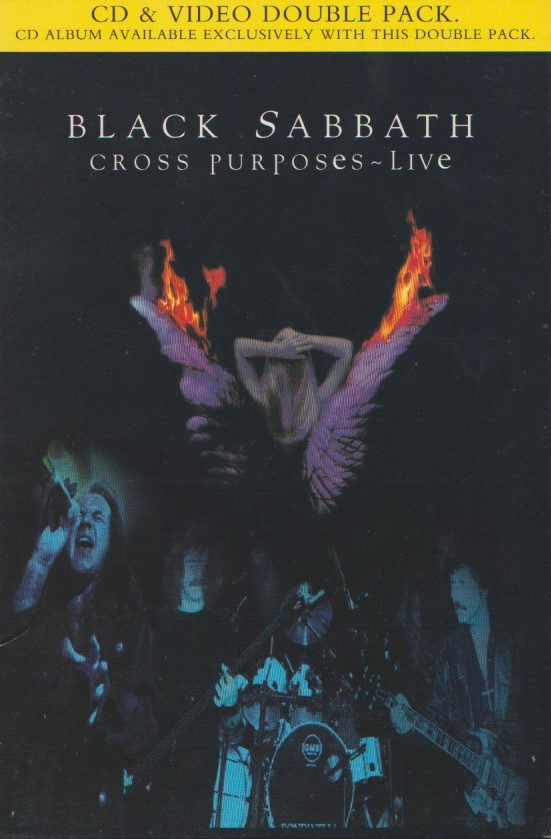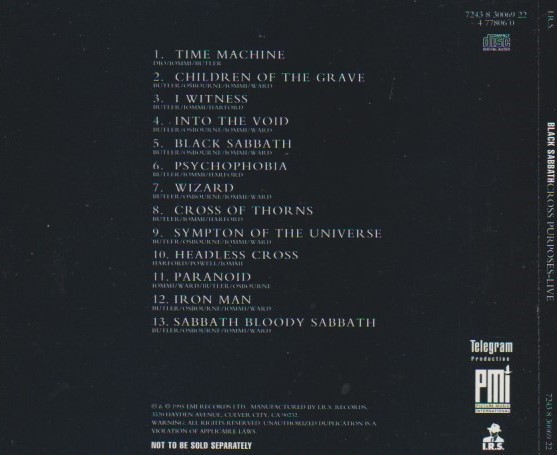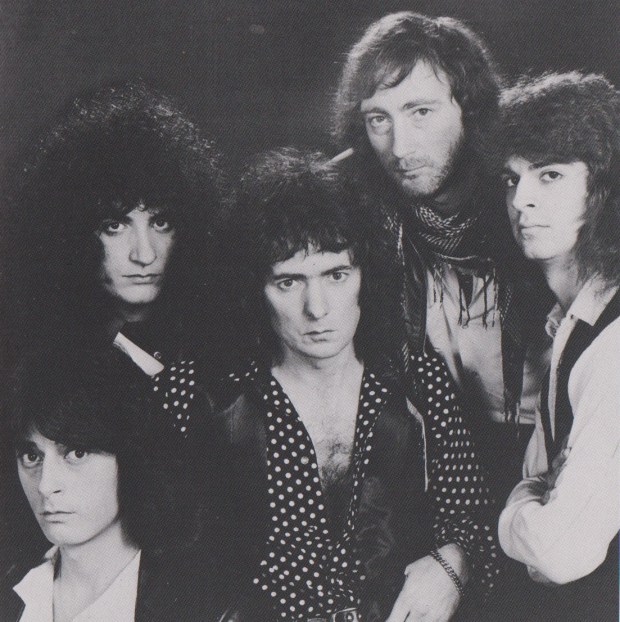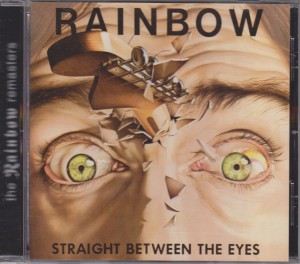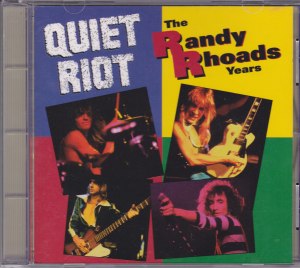 BLACK SABBATH – Cross Purposes (1994 EMI Japan)
BLACK SABBATH – Cross Purposes (1994 EMI Japan)
Cross Purposes catches a lot of crap from fans, and maybe it is the softest Sabbath, but it ain’t bad. The Tony Martin era was unfairly derided when he was the singer in Black Sabbath. “Only Ozzy or Ronnie — no Tony!” complained some fans. Well, we had Ronnie for Dehumanizer and that didn’t last. Tony Martin was probably always the backup plan in case things went south with Dio. It is said that Tony Martin recorded his own set of vocals for the Dehumanizer album in case Dio left abruptly. It wasn’t a surprise to anyone that Tony Iommi called up Martin when Dio did inevitably walk.
Ronnie brought drummer Vinny Appice with him, which meant Sabbath were replacing two members. In a genius move, Iommi snapped up ex-Rainbow heavy-hitter Bobby Rondinelli. Bassist Geezer Butler stayed put, but not without regrets. He would later say that he thought they were recording an album for a new band, but that Iommi decided to use the name Black Sabbath. This seems hard to believe given that Iommi always returned to the Sabbath name in the past.
Whatever the case may be, Cross Purposes was met with mixed reactions when it was released in 1994. While some welcomed the return of a classic sounding band, others called them irrelevant in the face of grunge. Indeed, Sabbath were accused of copying the style of Alice in Chains on “Virtual Death”, featuring a double tracked vocal similar to the Seattle band’s trademark sound.
True as that may be, there is no question that opener “I Witness” sounds like no band other than Black Sabbath. From Iommi’s squealing guitar shrieks to Geezer’s slinky bass, only one band sounds like this. Yes, on the surface Tony Martin sounds like Dio, but that sells him short. Dio has more grit, while Martin takes it smooth. “I Witness” is one of those blazingly fast Sabbath openers, and Rondinelli’s massive snare sound just kills it. I’ve always enjoyed how Black Sabbath worked their name into certain lyrics, like “Sabbath Bloody Sabbath”. Here, Tony Martin (an underrated lyricist) refers to the “pilgrims of Sabbocracy”, a word that doesn’t seem to exist outside the Black Sabbath pantheon.
Perhaps one of the biggest reasons this album was poorly received is that two of its best songs are ballads. People forget that Sabbath have many classic ballads — “Solitude”, “Changes” and “Born Again” come to mind. “Cross of Thorns” is a vocal workout for Martin that darkens the sky and shakes the seas. An acoustic riff begins the journey, but it transforms into something bigger and more dramatic. It also includes one of Iommi’s most memorable guitar solos from his entire career. Special mention goes to late keyboardist Geoff Nicholls who provides much atmosphere for this dark burner.
“Psychophobia” is an interesting song; not the most memorable but with a tricky riff that’ll get the heads banging. The middle section exactly halfway into the song is outstanding. It’s also a gas to hear Martin singing “It’s time to kiss the rainbow goodbye”. A sly jab at Dio? Fans will probably always see it that way. But then comes “Virtual Death”. Its possible grunge inspirations stick out like the sorest of thumbs on side one. This slow song drags too long. The whole “virtual reality” trend was well worn out by 1994, so that did not help matters much. Fortunately the first side redeems itself with a resounding closer called “Immaculate Deception”. The beguilement here is that the song seems like trudge at first, until Rondinelli puts it in turbo on the choruses.
Side two opens with the second ballad (more of a blues really) called “Dying For Love”. This is reminiscent of “Feels Good to Me” from the Tyr album. Interestingly, Geezer’s bassline sounds like the one Bob Daisley played on “The Shining” in 1987. (Geezer was around when “The Shining” was written, possibly under the name “No Way Out”.) It must be said that, as great as Tony Martin is on this song, it would have sounded out of this world had Dio sung it.
“Back to Eden” is a skipper. Nothing particular wrong with it, just not as good as other tracks. We resume on the single, “The Hand that Rocks the Cradle”. A keyboard opening gives way to a killer Iommi riff, one that sticks in your brain for days. Top it off with an excellent chorus and this track is a winner. Shame it never had a chance as a single. “Cardinal Sin”, like “Back to Eden”, isn’t much to talk about, though it does have a cool keyboard line.
The standard album ends on “Evil Eye”, a song that incredibly came about through an unlikely 1993 jam with Eddie Van Halen. Van Halen laid down a solo, but the band weren’t recording properly. According to Tony Martin, the Van Halen recording is simply too poor in quality to release. I don’t think fans would mind, but that is wishful thinking considering they couldn’t even give Eddie a writing credit due to contractual wranglings. This song just grinds, like a mountain over the aeons. Tony Martin wails on the chorus, and Tony Iommi lays down several minutes of guitar licks that may or not have been inspired by Van Halen’s original solos.
A big thanks must go out to Harrison the Mad Metal Man for locating this Japanese printing of Cross Purposes that you are looking at. A Sabbath collection that began in earnest back in 1992 was finally completed in 2020. The bonus track here is “What’s the Use”, a song that doesn’t quite sound like the rest of the album. The short choppy Iommi riff sounds more like Judas Priest than Sabbath, but it’s a welcome addition because it’s unlike the usual.
Had Cross Purposes come out under a different band name (something anonymously 90’s…like, I dunno, Carpet or something) with “Virtual Death” as the single, who knows what might have happened? Probably nothing, because just as there were too many glam rock acts in the late 80s, the 90s were choked to the gills with alterna-bands. A Japanese copy is expensive to come by, so don’t hesitate too much if you find a gently used domestic CD in the wild. The album is, of course, out of print.
4/5 stars


